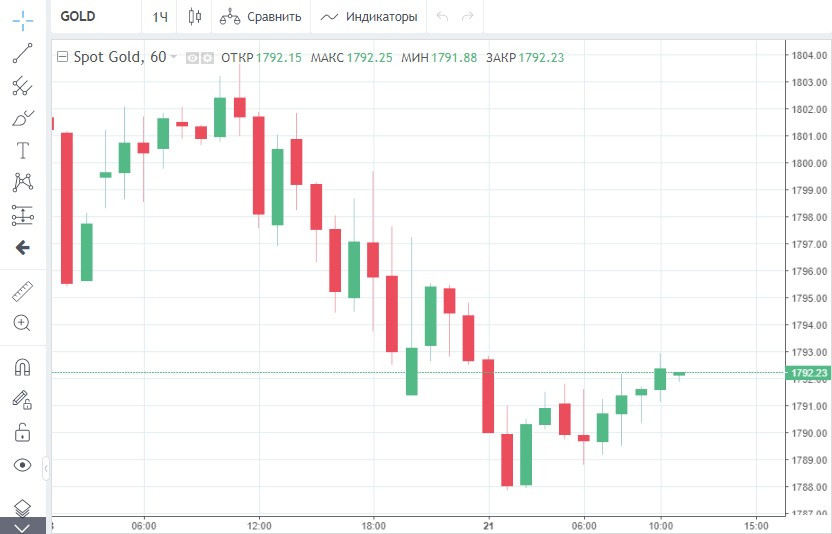The bullion lost momentum yesterday and collapsed again below the key $1,800 mark. According to experts, this is a bad omen. They believe the gold market is on the verge of a major collapse.
The precious metal ended Monday's trading lower, despite a number of tailwinds. Gold failed to rise even on coronavirus risks, which supported bullion well last Friday.
Concerns about the new COVID-19 mutation are growing as the number of 'omicron' infections increases. The strain has a high rate of spread and is already recognized as dominant in several regions.
The situation is exacerbated due to New Year's and winter holidays, during which travel tends to increase. A number of countries have therefore introduced stricter quarantine measures to slow down the spread of the virus.
In the Netherlands, for example, the fourth lockdown has already been introduced. New restrictions have also been announced by Irish Prime Minister Micheal Martin, while other European states are still only considering the need for Christmas quarantines. The latter includes the United Kingdom, which in recent days has seen the highest infection rates of any country in the pandemic.
Also, yesterday, gold prices ignored another positive factor. Senator Joe Manchin's refusal to support Joe Biden's $1.75 trillion spending plan. Analysts believe that the bill initiated by the US leader can now effectively be put to rest, as Democrat J. Manchin's vote is crucial in the upper house of Congress.
Reports of a possible failure of the plan have forced economists to revise their forecasts for US economic growth for 2022 downwards. This has had a negative impact on US markets. Yesterday US stock indices plunged more than 1%.
However, even investors' avoidance of risky assets did not boost demand for precious metal. On Monday the bullion fell by 0.6%, or $10.30. Thus, the price dropped to $1,796.40.
According to experts, the latest drop in gold is the result of a global sell-off amid short-term liquidity shortages due to the short working week. Many global markets will be closed this coming Friday on the occasion of Christmas celebrations.
At the same time, there is another explanation as to why bullion has taken a downward course. Some analysts believe the precious metal has been hurt by the prospect of higher interest rates. Market participants continue to digest the Fed's hawkish strategy for next year.
Despite the problems that the US economy may face due to omicron, the US central bank is set to raise interest rates in 2022. The regulator hopes that these measures will curb inflation, which is rising amid an uneven economic recovery from the pandemic.
Last week, the Fed's interest rate decision was in the midst of investors' attention. However, Georgette Boele, an analyst of Dutch bank AMB AMRO, believes that next year's gold price will be influenced not only by the rhetoric of the US regulator, but by global monetary policy in general.
The ECB, the Bank of Japan, the Reserve Bank of Australia, the Riksbank and the Swiss National Bank will likely hike later compared to the other central banks, but the direction is towards tightening and not easing," Boele said.
A more aggressive course by regulators would have a negative impact on the price of gold as government bond yields rise. ABN AMRO expects bullion prices to fall by around 16% from current levels to $1,500 in 2022.
Boele estimates the asset will trade at an average of $1,300 an ounce. The strategist explains her bearish scenarios by that gold again failed to keep growth above psychologically important mark in $1,800 and by that predetermined the further destiny.












